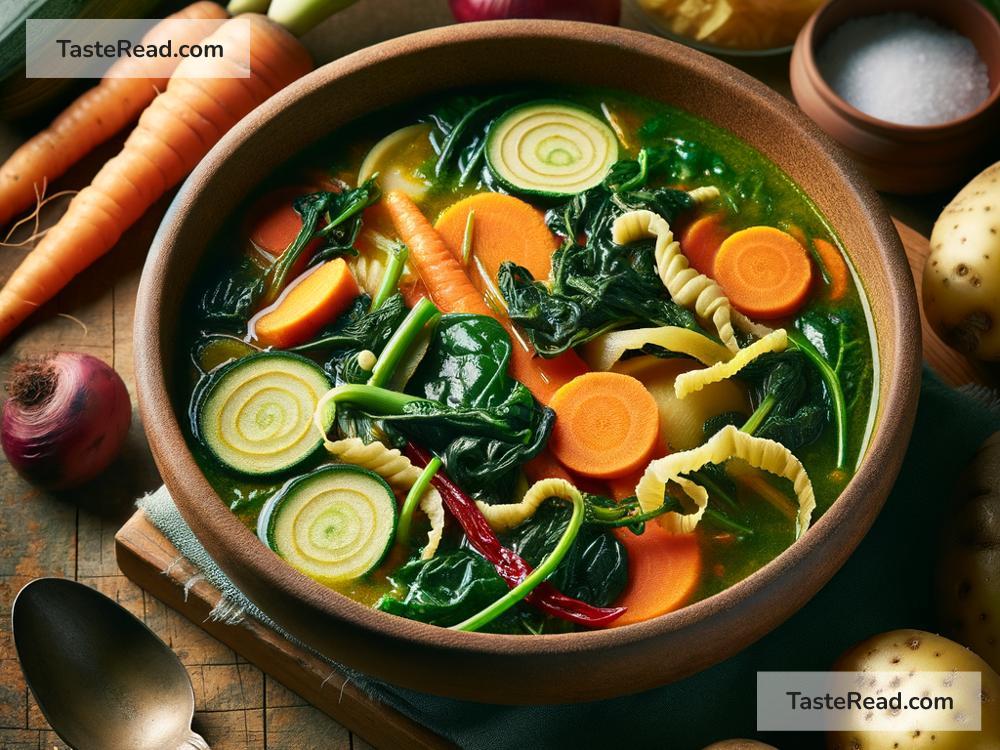Zero-Waste Soups: Your Ultimate Guide to Delicious, Earth-Friendly Meals
In today’s world, where climate change and waste disposal are significant concerns, more and more people are looking for ways to live sustainably. Among the many steps we can take to help our planet, reducing food waste is something all of us can do right from our kitchens. Enter the concept of zero-waste soups—a delicious, simple, and earth-friendly solution to minimize waste and make the most out of our groceries.
But what exactly is a zero-waste soup? Simply put, it’s a soup made by using food scraps and leftovers that might otherwise end up in the trash. Not only does this approach help in cutting down food waste, but it also encourages creativity in the kitchen, and the results are surprisingly delightful and nutritious.
Let’s dive into how you can start crafting your own zero-waste soups from scraps, ensuring nothing goes to waste:
Starting with the Basics: The Broth
The foundation of any great soup is its broth, and creating a flavorful broth is the first step towards a zero-waste kitchen. Save scraps like the tops of leeks, carrot peels, celery ends, and onion skins in a freezer bag. Once you’ve collected enough, simmer these in a large pot of water with some salt for a few hours. Strain out the solids, and voila, you have a homemade vegetable broth that’s practically free and made entirely from scraps that would otherwise be thrown away.
The Magic of Leftovers
Before you toss last night’s roasted vegetables or that half-eaten roast chicken into the compost bin, think soup! Leftovers can be the star ingredients of your next meal. Chop up whatever vegetables you have—everything from wilted spinach to soft tomatoes can find a new life in soup. Combine them with the broth you made, add in your leftover meats if you have any, and let the pot simmer. The great thing about soup is its flexibility; almost any combination of ingredients can work, so feel free to experiment.
Seasoning from Scraps
Now, for adding flavor to your soup without creating waste. Herb stems, like those from parsley and cilantro, are packed with flavor and are often thrown away. Instead, tie them together with a string and let them simmer in your soup for an added burst of freshness—just remember to remove the bundle before serving. Cheese rinds, particularly from Parmesan, can also add a deep, savory flavor to soups. Simply toss one in while your soup is cooking and take it out before you’re ready to serve.
Finishing Touches
Once you’ve collected your scraps, made your broth, and combined your ingredients for a delightful simmer, consider the finishing touches that can elevate your soup from good to great. Stale bread can be toasted and rubbed with garlic to make crunchy croutons, while wilted herbs can be chopped up for a vibrant garnish. Even the last dribbles of cream or dollops of yogurt nearing their expiry date can be swirled in for a touch of creaminess.
Embracing Zero-Waste Cooking
Making zero-waste soups from scraps is more than just a way to reduce food waste—it’s a mindset. It encourages us to look at our kitchens and our cooking in a new light, seeing potential where we might have seen waste before. Here are a few tips to embrace this sustainable approach fully:
- Get organized: Keep a designated container in your fridge or freezer for saving scraps. This way, you’re more likely to remember to use them.
- Be creative: Don’t be afraid to experiment with flavors and ingredients. The best zero-waste soups are often the result of unexpected combinations.
- Share the love: Cooking is an act of love, and what’s more loving than caring for our planet? Share your zero-waste cooking journey with friends and family to inspire them to give it a try.
In conclusion, zero-waste soups from scraps are a simple, delicious, and impactful way to reduce food waste and support our planet. By getting creative with leftovers, saving scraps for broths, and adopting a zero-waste mindset, we can all contribute to a more sustainable world—one bowl of soup at a time. Let’s get cooking!


